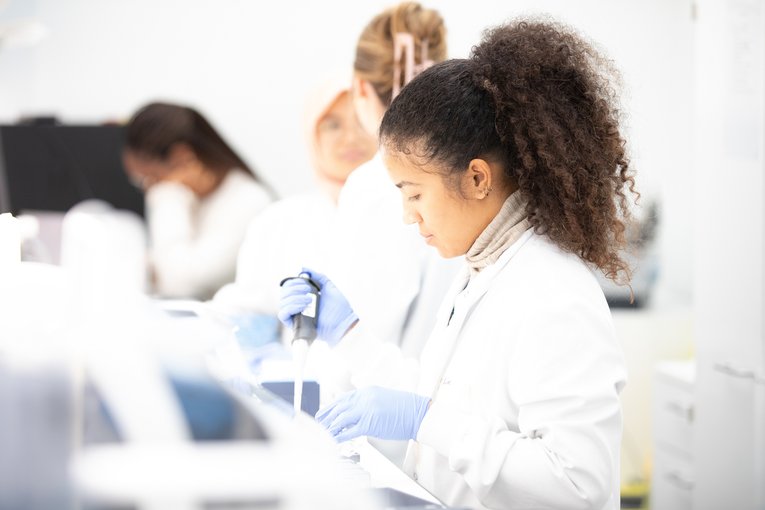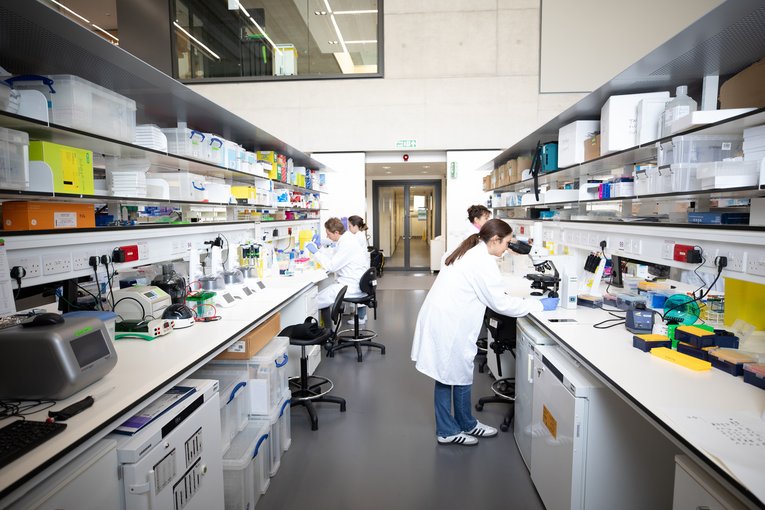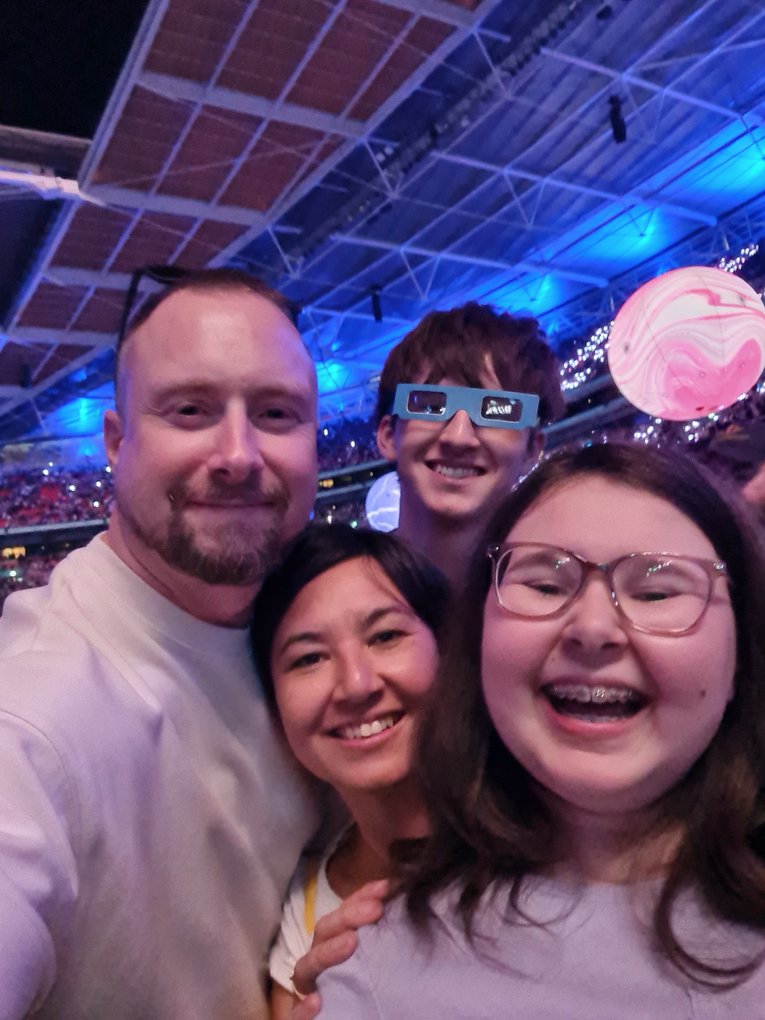
https://www.gosh.nhs.uk/news/boost-stem-cell-research-gosh/
Boost for stem cell research at GOSH
21 Nov 2017, 11:30 a.m.
A state-of-the-art stem cell research facility is now open at Great Ormond Street Hospital (GOSH), increasing our capacity for cutting edge research into regenerative medicine.
Stem cells have the potential to develop into any type of cell in the human body and therefore hold great promise for regenerative medicine. They are increasingly used to help understand diseases, and to develop new personalised therapies.
GOSH’s new stem cell research facility, which is located in the UCL Great Ormond Street Institute of Child Health (ICH), specialises in induced pluripotent stem cells (iPSCs) - a type of stem cell that can be created from other tissues, including blood and skin samples donated by patients. The advantage of iPSCs is that there is a lower risk of rejection when the cells are transferred into the patient.
The facility was funded by Great Ormond Street Hospital Children’s Charity, and its running is supported by the National Institute for Health Research (NIHR) GOSH Biomedical Research Centre (BRC). The cutting-edge laboratory consists of sterile facilities and specialised equipment to grow and investigate stem cells. Projects already underway range from studies of childhood conditions affecting the muscle and liver, to the brain and the eyes. To celebrate the opening of the facility, the first iPSC Symposium was held in November where more than 140 researchers came to share their pioneering work on stem cells. Professor Jane Sowden, who set up the facility, said:
“The new laboratory will allow us to expand our research into stem cells for regenerative medicine, grow new tissues for transplantation and help us better understand how childhood diseases progress, paving the way for the development of new treatments to slow or stop complex childhood conditions.”
Using stem cells to restore vision
Dr Elisa Cuevas and Professor Jane Sowden are using the new facility to grow stem cells which differentiate into retinal tissue – a layer of cells at the back of the eye essential for vision. Their goal is to develop light-sensitive photoreceptor cells so they can be transplanted into eyes of children with degenerative conditions such as Usher syndrome, to help improve their vision.
More information
Find out more about regenerative medicine research taking place as part of the NIHR GOSH BRC’s Advanced Treatments for Structural Malformations and Tissue Damage research theme.
To learn more about stem cells watch this film created by GOSH Charity.

NIHR launches £13.7m investment into brain tumour research
The National Institute for Health and Care Research (NIHR) has announced a £13.7 million investment that will support ground-breaking research to develop novel brain tumour treatments in the UK.

New consortium aims to help improve care for arthritis patients
A new UK-led research group, including Great Ormond Street Hospital and University College London, aims to improve the lives of children, young people and adults with arthritis by defining for the first time what being in ‘remission’ from arthritis truly

Update for patients and families on industrial action - December 2025
As you may be aware, some of our Resident Doctors will be taking part in planned industrial action from 7am on Wednesday 17 December to 7am on Monday 22 December.

‘Ready-made’ T-cell gene therapy tackles ‘incurable’ T-Cell leukaemia
A groundbreaking new treatment using gene-edited immune cells, developed at GOSH and UCL has shown promising results in helping children and adults fight a rare and aggressive cancer
